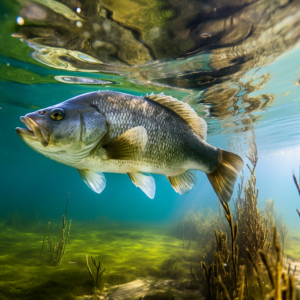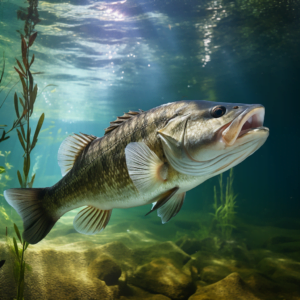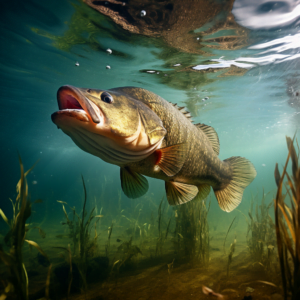Largemouth bass are one of the most popular freshwater gamefish across North America. From the avid tournament angler to the weekend pontoon boater, many enjoy pursuing bucketmouths for their strong fighting spirit and appetite for a variety of baits and lures. Their large size potential, accessibility, and broad distribution make them a favorite target species for millions of anglers.
A key aspect of understanding these fish is learning How Do Largemouth Bass Reproduce and raise their young, which is crucial for fishery managers working to maintain healthy, sustainable populations of this popular gamefish. The reproduction of largemouth bass takes place in the spring when water temperatures reach the optimal range. It involves the male constructing a spawning nest, courting gravid females to deposit eggs, fertilizing the eggs, and then guarding the nest until the eggs hatch and fry emerge. This intriguing reproductive cycle plays out across thousands of lakes, rivers, and reservoirs annually.
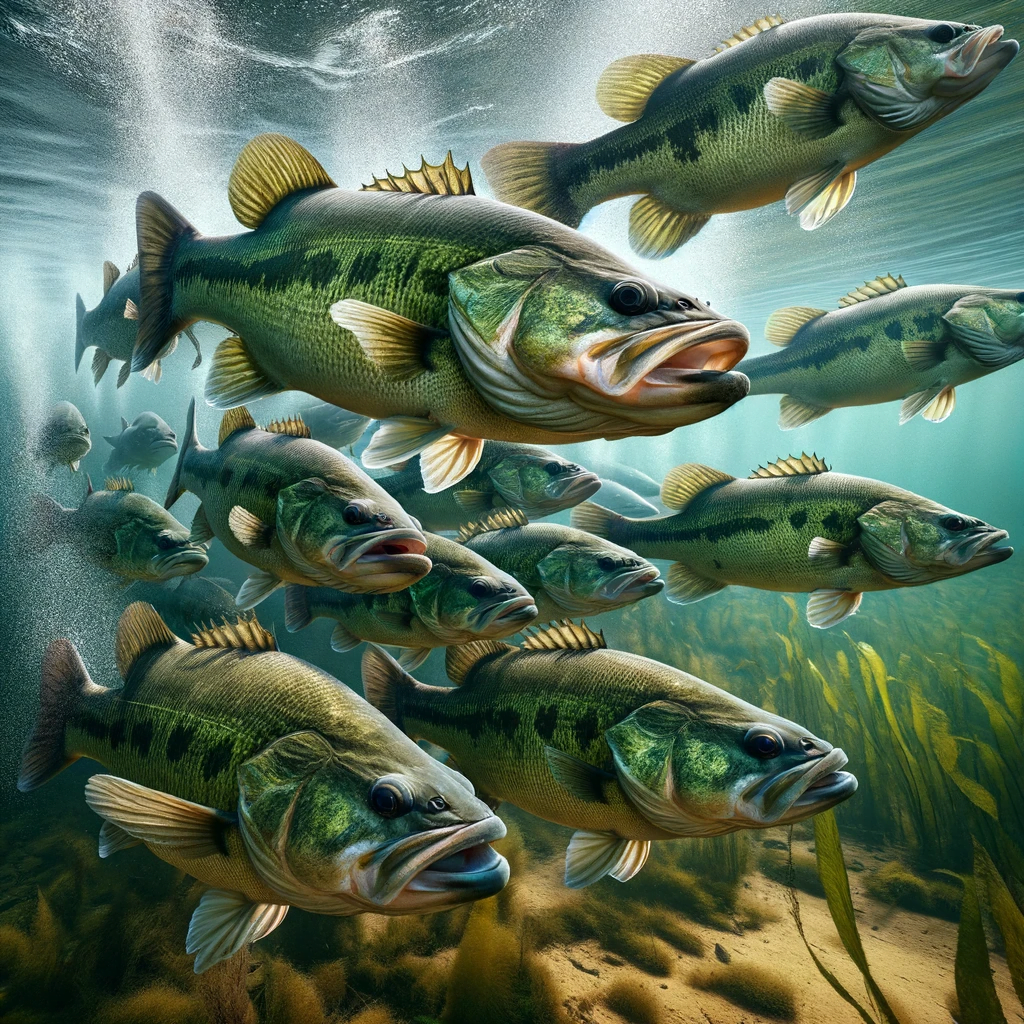
When Does Spawning Occur?
Largemouth bass are spring spawners, meaning they deposit and fertilize their eggs in the spring season. The exact timing of spawning is determined primarily by water temperature.
When the water reaches about 60-65°F, usually sometime between late March and early June, largemouth bass will begin building their nests and spawning. The exact timeframe can vary considerably across the species’ broad geographic range:
- In Florida and other Deep South states, largemouths may spawn as early as January or February when water temperatures reach the mid-60s. Spawning wraps up by early March in most southern locations.
- From the mid-South into states like Texas, Louisiana, Arkansas, and Oklahoma, expect spawning to occur mostly from late March through April as water temperatures climb to 60°F or above.
- In the U.S. Midwest and Mid-Atlantic regions, peak spawning takes place in May as waters slowly warm into the 60s. Stragglers may deposit eggs as late as early June.
- In northern states and Canada, late spring conditions delay spawning until late April or May in most cases. High-elevation lakes may not warm up sufficiently until early June.
Within a given lake or reservoir, the ideal spawning temperature threshold may vary by only a few degrees from year to year depending on seasonal weather patterns. Tracking surface water temperatures and observing bass behavior will give you a strong indication of when the spawn is imminent.
Spring provides prime conditions for largemouth reproduction and juvenile growth. Food in the form of zooplankton, insects, and other prey is abundantly available. Submerged aquatic vegetation and cover have yet to experience their full summer growth, allowing bass access to the shallows. Lengthy daylight hours also give extra feeding time for hungry post-spawn bass and developing fry.
Preparing the Nest
When the conditions are right, male largemouth bass stake out and prepare spawning nest sites with optimal habitat characteristics. The nests are constructed in shallow water, usually 1-4 feet deep around visible cover and structure. Prime nest locations include:
- At the base of visible shallow cover like stumps, logs, tree roots, brush piles, or dock posts. The cover helps conceal the nest yet allows easy access.
- Near or within patches of emerging bulbous aquatic plants like bulrushes or arrowheads. The new green shoots provide shelter from currents and shade.
- Along inside edges of weedlines or other submerged aquatic vegetation. The vegetation helps protect the nest from prevailing winds and waves.
- Areas with sand or gravel bottom. Softer sediments make it easier for the male to fan out the nest bowl.
Nesting sites are often positioned close to deeper drop-offs that largemouth can quickly retreat to when predators enter the area. Placement typically occurs on the north shores of lakes that get less direct sun exposure.
The male largemouth bass uses coordinated sweeps of his tail to fan out a circular depression in the lake bottom, clearing away debris and sunken leaves. Completed nests range from 1-2 feet in diameter and are 3-6 inches deep, providing just enough room for the pair to swim over the eggs during fertilization. Some nesting males exhibit a darker coloration along their belly and throat region.
To prepare the nesting site, the male:
- Clears sediment and debris from the nest location through fanning motions and digging with his body.
- Packs down sediment particles within the nest bowl to harden the surface. This prevents the nest from collapsing when the female enters.
- Circles the nest to check for holes, debris, or unevenness that could jeopardize eggs. Additional fanning smooths flaws.
- Stands guard over the completed nest, awaiting arrival of ripe females.
This meticulous nest preparation may take 1-3 days before the male is ready to spawn. In lakes with high bass density, suitable nest sites are limited and males must compete aggressively to establish and maintain access to prime real estate.
Spawning Behavior
Once one or more nests are prepped and ready, the spawning ritual begins. Largemouth bass are polygamous when they spawn, meaning one male may mate with multiple females to fertilize the eggs deposited in his nest.
The beginning of the ritual involves the male pursuing and bumping a ripe female, nudging her underside, to encourage her towards the nest. At times this involves chasing a female back and forth from the nest several times before she settles onto the surface.
When ready, the female settles into the nest beside the male and rolls slightly on her side. She releases anywhere from 2,000 to over 100,000 eggs during the deposit process which takes several seconds as the pair circles around the nest perimeter.
At the same time, the male releases clouds of milt containing sperm that fertilizes the eggs as they sink down and adhere to the nest bottom. The fish continue rotating in circles during the spawn.
This spawning event may last from 30 seconds up to a full minute or two before the fish part ways. The female then often returns to deeper water while the male remains to guard the nest. One spawning session may not deposit all the female’s eggs, so she will return to the nest multiple times over a span of days to fully develop her clutch.
One nest may contain eggs from multiple females that have spawned with the resident male. DNA analysis reveals each largemouth bass nest contains eggs fertilized by 2-12 or more females. Larger males end up mating with more females due to their ability to fend off challengers to prime spawning sites.
Spawning activity is largely dictated by water temperature and may continue for 2-4 weeks until completed. Individual fish may spawn every few days during this period. Shallow, quiet coves with optimal habitat often host intense spawning activity.

Caring for the Eggs
Once spawning concludes and fertilized eggs are deposited in the nest, the male parent’s work has just begun. He will remain diligently nearby to tend and protect the nest until the eggs hatch and fry swim off on their own, a period of roughly 2-10 days.
Caring paternal duties include:
- Guarding: The male remains close to stand guard over the nest site, keeping watch for potential predators including fish, turtles, wading birds, and other egg thieves. He may make quick darting motions at intruders to try spooking them away.
- Fanning: Using his fins, the male largemouth continually fans water currents over the eggs to provide fresh oxygenated water and prevent fungal or bacterial growth.
- Debris Removal: Any debris like leaves or twigs that fall into the nest are promptly snatched up and cast out of the nest bowl by the male to prevent suffocation or damage to the eggs.
- Repairs: If storms or nest raiders disturb the nest, the diligent male will make repairs by fanning out sediments and rounding off the damaged area.
Threats to the survival of the fertilized eggs and developing embryos include:
- Predation: Many fish species like bluegills, crappie, catfish, and even younger bass will eagerly feed on eggs if given the chance. Aquatic turtles, snakes, amphibians, shorebirds, and small mammals may also prey on nests.
- Siltation: If winds or storms stir up sediments, the nest can become buried, cutting off oxygen flow. Cloudy or murky water also hampers the male’s ability to defend the nest site.
- Fungus: In murky water or if insufficient fanning occurs, fungal or bacterial growth can overtake a nest, killing the embryos.
- Disturbance: Boats, animals, or anglers accidentally disturbing the nest site may cause the male to temporarily abandon the area, leaving eggs exposed.
Within approximately 2-10 days in ideal 60-70° water, the eggs will hatch out into tiny fry roughly 1/4 inch long. They absorb nutrients from their attached yolk sacks for roughly 5-10 days before becoming free-swimming juveniles that school and feed in the shallows. The male parent continues guarding duties for the fry for about 2 weeks after hatching until they disperse from the nest site.
Habitat Needed for Reproduction
Certain habitat characteristics are vital for sustaining healthy largemouth bass reproduction year after year. Fisheries managers can enhance spawning success by managing for ideal reproductive habitat. Key components include:
- Shallow Sheltered Areas: Shallow coves, shorelines, and flats provide the 1-4 ft depth needed for nest building. Areas sheltered from wind and waves keep nests intact. Vegetation also helps buffer wave action.
- Submerged Cover: Woody cover, aquatic plants, and other structure give shade, hide nests from predators, and provide ambush points for guarding males. Lakes with ample shallow cover see greater spawning success.
- Bottom Type: Sand, gravel, and rocky areas allow easier nest construction and better egg adhesion than silty, muddy bottoms. Lakes can be enhanced by adding suitable gravel or cedar brush bundles.
- Clear Water: Low turbidity allows guarding males to spot approaching predators and defend the nest. Silt-laden waters often lead to poorer reproductive success.
- Temperature: Active spawning requires water temperatures in the ideal 60-70°F range. Stable, moderate seasonal warming brings bass into spawn more consistently.
- Prey Availability: Newly hatched fry need abundant zooplankton and small insects to feed on. Lakes with good fertility and adjacent wetlands generally see stronger young bass survival.
- Protection from Predators: High densities of egg predators like bluegills and crappie can jeopardize nest success. Balanced predator/prey populations help offset losses.
Largemouth bass are less particular when it comes to water chemistry factors like pH and hardness. They can successfully spawn in waters ranging from 5.0-9.0+ pH and nearly any mineralization level.
By understanding critical reproductive habitats, fishery managers can monitor and supplement local conditions to sustain robust largemouth populations. This ranges from controlling sediments entering a lake to adding gravel spawning beds and drawdowns to promote aquatic vegetation.
Anglers can also do their part to safeguard reproductive success when fishing during spring:
- Avoid disturbing known spawning areas by keeping boat distance.
- If catching a heavy female in spawn, quickly release her to preserve eggs.
- Don’t repeatedly cast to obviously guarding males; allow them nest duties.
- Follow rules on harvest limits; releasing females helps maintain egg sources.
- Advocate for conservation of shoreline vegetation to protect young bass.
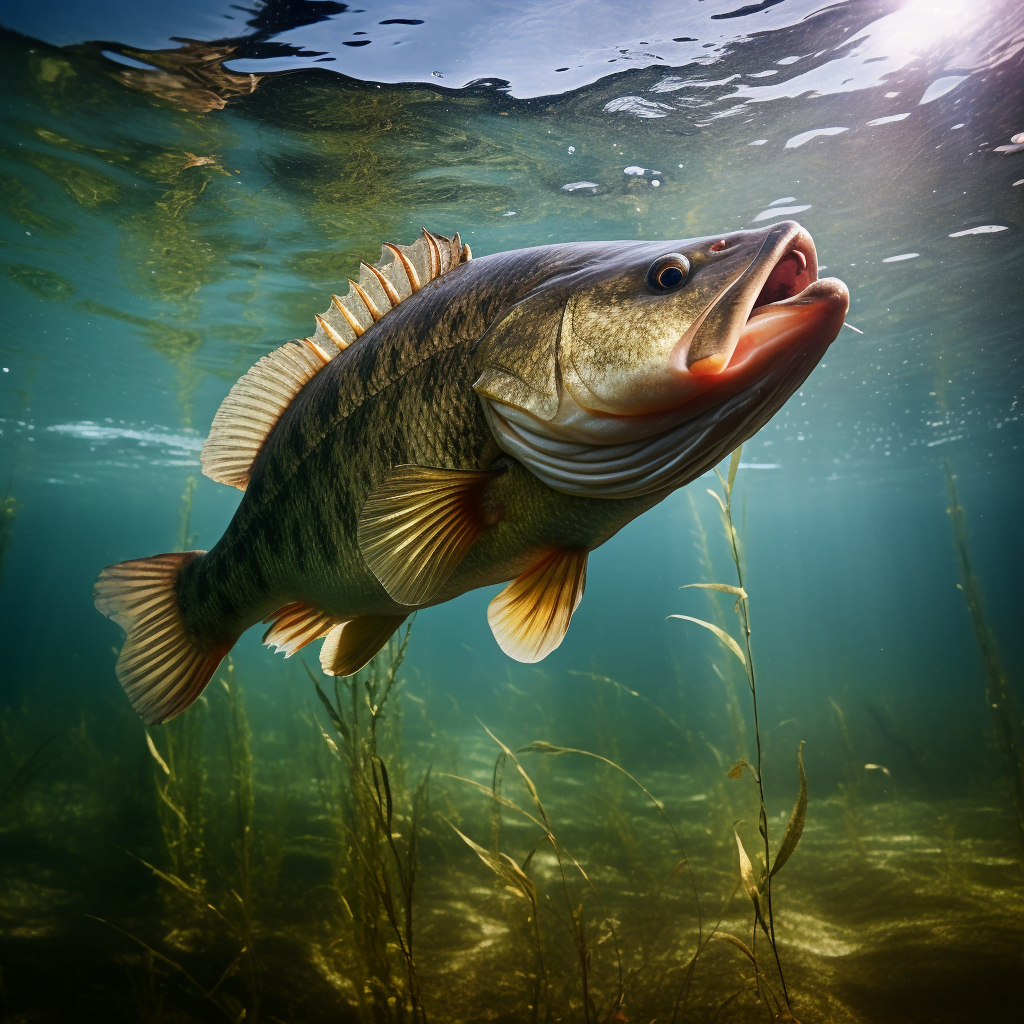
Signs of the Spawn
Knowing when bass are actively on their spawning beds can be valuable for both anglers and researchers. Here are somegiveaway signs the spawn is happening:
- Seeing big bass cruising shallow coves at a walking pace. They are seeking nest sites.
- Noting cleared circular areas on the lake bottom; these are completed nests.
- Witnessing chasing behavior between males competing for prime real estate.
- Hooking female bass with swollen bellies full of eggs. Handle with care before quickly releasing.
- Catching males with bloody tails or frayed fins from fanning activities. Again, quickly release with care.
- Experiencing aggressive strikes and follows from bass guarding nests. They are instinctively protective.
- Noticing “lip lock” behavior where two bass are locked onto each other; these are competing males.
- Having bass repeatedly return to and strike at the same exact area. You are likely over their nest.
Being able to recognize these telltale signs will clue observant anglers into when bass reproduction is at its peak. Avoiding excessive disturbance will help ensure the spawn is a success.
Conclusion
The reproduction process of largemouth bass truly highlights the species’ parental devotion and biological drive. While too often taken for granted, healthy sustainable fisheries rely on successful spawning seasons year after year. It starts with males tenaciously competing for and constructing the perfect nesting sites. Courtship rituals result in females depositing as many as 100,000 eggs that each male meticulously fertilizes and tends to until hatching. Once free-swimming, the young must survive a harrowing first year of life before reaching catchable size. It is a reproductive cycle that has sustained bass populations for millennia. Careful management and stewardship will ensure it continues for generations to come.

